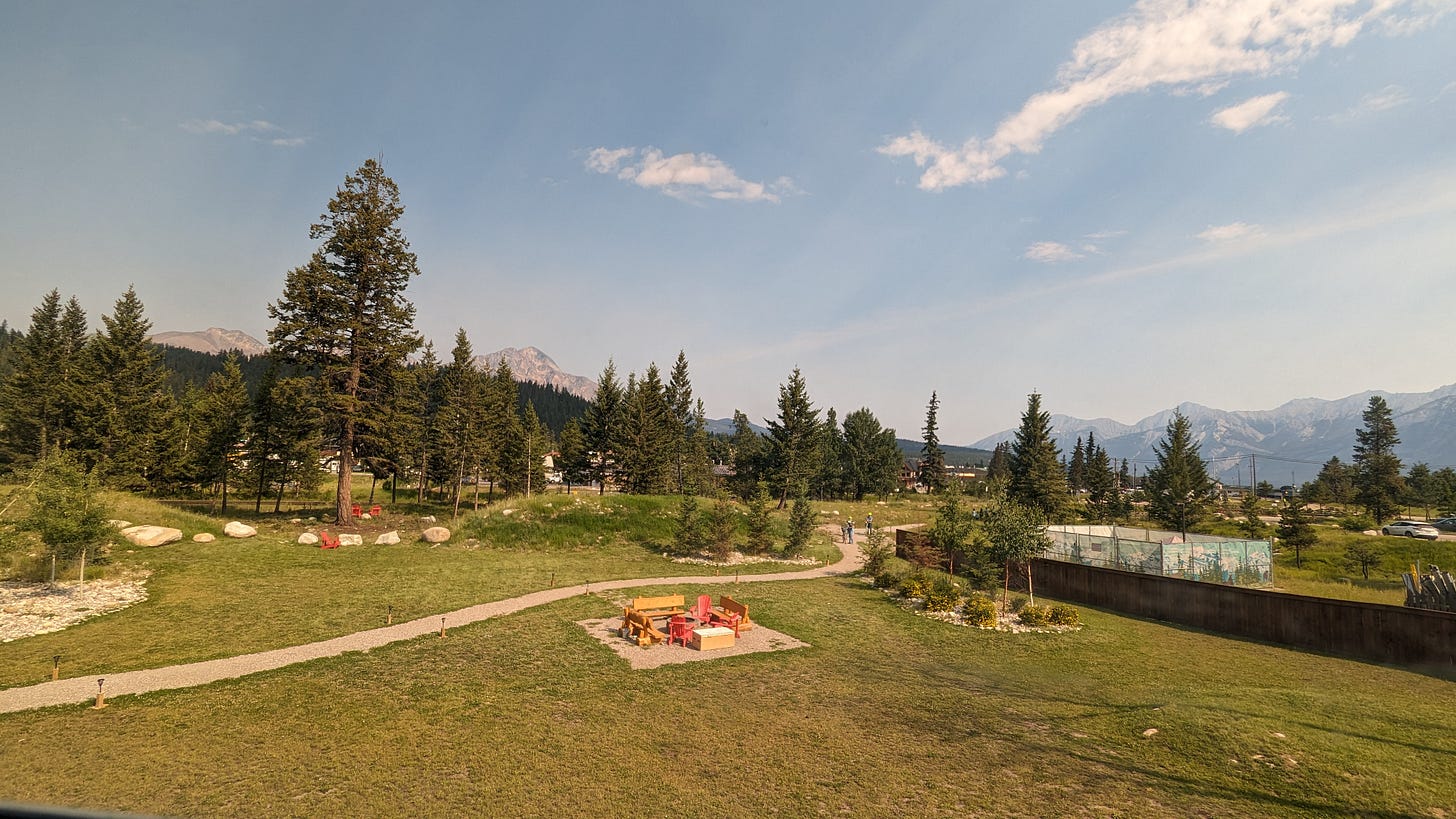A fateful email
It was a seemingly ordinary day when an email landed in my inbox on July 17th, carrying a message that would send me spiraling. The email was from a hostel in Jasper, in the northern Canadian Rockies, a refuge for travelers and adventurers alike, a place I had cherished just a year ago. The message was brief but devastating: the hostel had been reduced to ashes by a wildfire tearing through Jasper National Park.
Just a year earlier, I spent a memorable night with three of my closest friends at that very place. Looking at the towering peaks of the Canadian Rockies from the hostel, it was a night of reflections and friendships under a star-filled sky. But within a single year, this tranquil little abode was erased, replaced by the unforgiving waves of fire.

As days turned to weeks, the devastation unfolded further. It was not just the hostel; the entire region was under siege. Jasper, the town itself, was ablaze. His voice trembling, the mayor appeared on news broadcasts, speaking of a dystopia that had become all too real. Thousands fled, leaving behind their homes, their livelihoods, and their futures. Once teeming with life, the town had become an inferno, with thick smoke choking the skies and flames devouring the landscape.
I was thousands of miles away, yet the loss felt personal. The images of the raging fire, the fleeing residents, and the burned forests reminded the temporariness of things. The memories of my time in Jasper filled with awe and wonder turned into a poignant one. As I followed updates from the tragic event, I realized that this fire incident was not isolated. Canada had been battling an escalating crisis of wildfires and extreme heat, which was only intensifying each year.
Wildfires are part of the Canadian natural ecosystem, but…
Wildfires have long been a part of Canada’s natural ecosystem, shaping forests and supporting biodiversity. Indigenous communities, for centuries, practiced controlled burns to manage landscapes and prevent catastrophic fires. However, suppression policies over the last two and a half decades disrupted these natural cycles, accumulating dry fuel and making modern wildfires more intense and uncontrollable1.
In the 21st century, climate change has further exacerbated wildfire risks. Prolonged droughts, rising temperatures, and increased lightning storms have created the perfect conditions for massive fires. The scale of destruction has surged, with the 2016 Fort McMurray wildfire causing over $9 billion in damages and the 2023 wildfire season becoming the worst in Canadian history, with over 17 million hectares burned23.

Canada's wildfires severely impact health, infrastructure, the economy, and ecosystems. They increase respiratory and cardiovascular risks from smoke, disrupt communities with evacuations and property loss, and damage critical infrastructure like power lines and roads. Economic costs include firefighting expenses and insurance claims. Wildfires also harm biodiversity, degrade air quality, and contribute to climate change through carbon emissions. Vulnerable populations, including Indigenous communities, face disproportionate risks.4
Response to limit consequences of wildfires
Canada has begun adopting new approaches to wildfire management to ensure minimum harm from wildfires. Programs like FireSmart promote fire-resistant landscaping and community preparedness. Indigenous fire stewardship, once dismissed, is now gaining recognition as an essential tool in mitigating wildfire risks. Investments in predictive technologies, such as satellite monitoring and artificial intelligence, are improving early warning systems. Policymakers also acknowledge the urgent need for emissions reduction to address the root cause of worsening wildfires—climate change itself.
The Wildfire-Ready report by the Intact Centre on Climate Adaptation at the University of Waterloo lists easy-to-use steps for individual homes to improve fire resilience through landscaping management and retrofit using non-combustible building materials. This report also lists three features of wildfire resilience at a community level: wildfire-ready structures and infrastructure, community design, and emergency response.
Way forward
Yet, as I sit here, reflecting on that email from July 17th, I know that the battle is far from over. The town of Jasper may have been evacuated, but the hope is that residents can recover and increase the community’s resilience to future such events.

Canada stands at a crossroads where the choices made today will determine the future resilience of its people and environment. Integrating traditional knowledge, modern science, and proactive policy measures can pave the way for a future where wildfires are no longer catastrophes but manageable elements of nature.
The ashes of Jasper serve as a reminder—not just of loss but of the urgent need for action. The time to adapt is now, before more cherished places and communities are lost to the flames.
Thank you for reading this essay and joining me on this journey of exploration. If you found it interesting and valuable, I would be grateful if you could share it with just ONE friend or colleague who may also find it intriguing. Also, please feel free to share your thoughts; what made you ponder for a second longer than usual?
Pyne, Stephen J. (2008) Awful Splendor: A Fire History of Canada. UBC Press.
Insurance Bureau of Canada (IBC). (2023). Severe Weather in 2022 Caused $3.1 Billion in Insured Damage – making it the 3rd worst year for insured damage in Canadian history. Media Releases.
Canadian Interagency Forest Fire Centre Inc. (2025, January 15). Fire Statistics. Retrieved from https://ciffc. net/statistics
Evans, C., Bonada, A., & Feltmate, B. (2023). Wildfire-Ready: Practical Guidance to Strengthen the Resilience of Canadian Homes and Communities. Intact Centre on Climate Adaptation, University of Waterloo.



